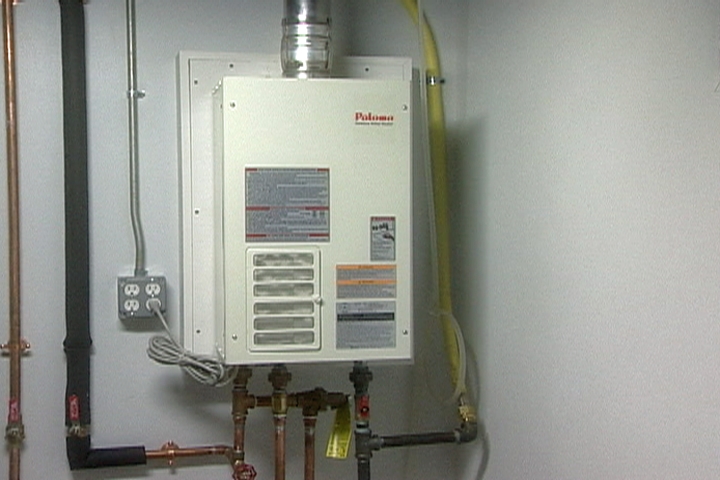Best Practices for Caring for Your Home's Hot Water System
Best Practices for Caring for Your Home's Hot Water System
Blog Article
In this article in the next paragraphs you can locate some high-quality tips around Tips on Maintaining a Water Heater.

Warm water is essential for day-to-day comfort, whether it's for a rejuvenating shower or cleaning meals. To guarantee your hot water system runs successfully and lasts longer, regular upkeep is key. This post offers sensible pointers and understandings on how to preserve your home's hot water system to stay clear of disruptions and pricey repair services.
Intro
Maintaining your home's warm water system might appear challenging, however with a few straightforward steps, you can guarantee it operates efficiently for years to find. This overview covers whatever from recognizing your hot water system to do it yourself upkeep tips and knowing when to contact specialist aid.
Importance of Maintaining Your Hot Water System
Routine maintenance not just expands the life-span of your hot water system but likewise ensures it operates efficiently. Ignoring maintenance can lead to reduced performance, greater energy expenses, and even early failing of the system.
Signs Your Hot Water System Requirements Maintenance
Understanding when your warm water system requires focus can avoid major problems. Watch out for signs such as inconsistent water temperature level, weird sounds from the heater, or rustic water.
Flushing the Water Heater
Flushing your hot water heater gets rid of debris buildup, improving effectiveness and extending its life.
Checking and Replacing Anode Rods
Anode rods prevent corrosion inside the storage tank. Checking and changing them when worn is critical.
Facility Problems Needing Expert Aid
Examples include major leaks, electrical problems, or if your water heater is consistently underperforming.
Routine Professional Upkeep Conveniences
Professional maintenance can include complete inspections, tune-ups, and making certain conformity with security criteria.
Examining and Changing Temperature Level Setups
Readjusting the temperature settings ensures optimal efficiency and safety and security.
Do It Yourself Tips for Upkeep
You can execute numerous upkeep jobs on your own to keep your warm water system in leading problem.
Looking for Leakages
Frequently inspect pipelines and links for leakages, as these can cause water damages and greater bills.
Understanding Your Warm Water System
Before diving right into upkeep jobs, it's valuable to understand the standard elements of your hot water system. Typically, this consists of the hot water heater itself, pipelines, anode rods, and temperature level controls.
Regular Monthly Maintenance Tasks
Regular month-to-month checks can assist capture minor problems before they rise.
Examining Pressure Alleviation Valves
Examining the pressure relief valve guarantees it functions appropriately and stops extreme pressure build-up.
Protecting Pipelines
Shielding hot water pipes lowers warm loss and can save power.
When to Call an Expert
While DIY upkeep is helpful, some problems need professional knowledge.
Verdict
Routine maintenance of your home's warm water system is vital for efficiency, durability, and price savings. By complying with these tips and understanding when to seek specialist assistance, you can ensure a reputable supply of warm water without unexpected disruptions.
Water Heater Maintenance Tips
Test the TPR Valve
Shut off the power and the cold-water supply valve. Place a bucket under the pipe connected to the temperature-pressure-release (TPR) valve on the top or side of the tank. (This valve opens if the tank pressure gets too high.) Lift the valve’s tab to let some water out, then let go. If water keeps flowing, drain the tank partway, unscrew the old valve with a pipe wrench, and install a new one. Check the Anode Rod
Put a hose to the tank’s drain cock and let out a few gallons of water. Now fit a 1 1/16-inch socket onto the rod’s hex head on top of the heater (or under its top plate) and unscrew the rod. If it’s less than ½ inch thick or coated with calcium, buy a new one, wrap its threads with Teflon tape, put it back in the tank, and tighten securely. Use this segmented rod if headroom above the tank is limited. Drain the Tank and Wash Out Sediment
Drain the remaining water in the tank into the bucket, then stir up the sediment on the tank’s bottom by briefly opening the cold-water supply valve. Drain and repeat until clean water comes out of the hose. Close the drain cock, refill the tank, and turn its power back on. Adjust the Temperature
Find the temperature dial on the side of the tank and unscrew its cover. Adjust the dial to 120 degrees using a flathead screwdriver. For every 10 degrees the temperature is lowered, you can expect to save up to 5 percent in energy costs. Turn the water heater off or the thermostat down to its lowest setting if you plan to be away from home for more than three days. Insulate the Pipes
Buy some self-sticking 3/8-inch-thick foam pipe insulation that matches the pipes’ diameter. Slide the foam over the hot-and cold-water pipes as far as you can reach. Insulating the cold-water pipe prevents condensation in summer. Peel the tape and squeeze the insulation closed. If the pipe is 6 inches or less from the flue, cover it with 1-inch-thick unfaced fiberglass pipe wrap. https://www.thisoldhouse.com/plumbing/21016402/how-to-maintain-a-water-heater

Hopefully you enjoyed our topic on Tips on Maintaining a Water Heater. Many thanks for finding the time to read our piece. Those who liked our blog entry if you please don't forget to share it. Thanks for being here. Kindly pay a visit to our website back soon.
Book Your Installation Report this page